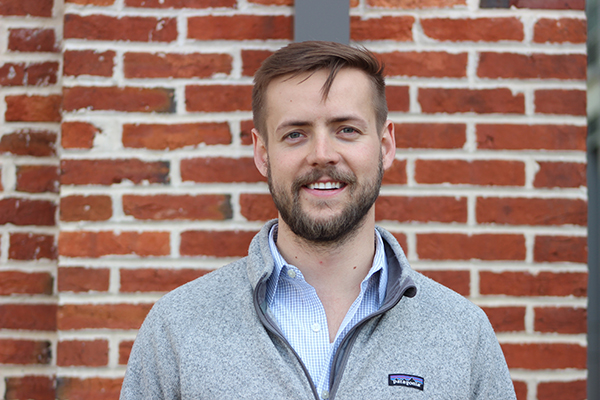Sustainability pushes a lot of our hot buttons—it’s a political issue, an economic concern, and a social conversation. Some people even see it as a moral matter. Sometimes it’s on the back burner, but then it blazes back into the headlines. Sustainability is, arguably, an industry unto itself, since the economic impact on companies trying to adhere to government guidelines or react to consumer preferences can be in the billions of dollars across a wide range of markets. Sustainability demands are hitting a variety of industries, not just food and beverage. For example, the move from the internal combustion engine to the electric vehicle can be called a “sustainability” issue.
Exclusive Series on Food Safety Tech:
The Eight Elements of Sustainability
1. Consumer preferences
2. Climate change
3. Food insecurity
4. Food waste
5. New foods
6. Packaging
7. Regenerative agriculture
8. Transportation and regulatory restrictionsIn light of the many disruptors in the food and beverage industry and most recently, due to the impact of the COVID-19 pandemic, sustainability is now front-page news. This article will discuss eight reasons why sustainability is now one of the defining issues in food and beverage manufacturing. Future articles in this series will examine each issue in more detail.
Consumer Preferences
The green consumer wants brands to embrace purpose and sustainability, and they want their purchases to contribute to the greater good, or at least, do no harm. The demand started among millennials and Gen Zers, but with the influence of social media, it’s expanded to all demographics.
The industry has been forced to introduce healthier products, with more ethically-sourced ingredients and more transparent supply chains. Younger consumers, especially, often trace a brand’s sustainability record with QR codes or smart labels. They want to know from where their food originates.
These consumer actions and attitudes are now influencing the development of new food items and packaging designs as manufacturers realize consumers are taking notice.
Climate Change
Warming is causing the earth’s poles, permafrost and glaciers to melt and the oceans to rise. Average sea levels have swelled more than eight inches since 1880, with about three of those inches gained in the last 25 years. Here’s the impact on sustainability—when sea levels rise and warm, flooding can occur, causing coastal seawater contamination and erosion of valuable farmland. Higher air temperatures may also rule out the cultivation of some valuable crops (gasp, chocolate!).
Hotter temperatures can also cause insect body temperatures to rise; they need to eat more to survive and may live through the winter instead of dying off. A larger, more active insect population could threaten crops. And changes to water, soil and temperature could affect the complex ecosystems of the world’s farms, causing plant stress and increasing susceptibility to disease. The food manufacturing and farming industries are starting to investigate new ways of growing food in environments that can protect crops from these changes.
Food Insecurity
Food demand is expected to increase anywhere from 59% to 98% by 2050. Populations are growing and due to rising incomes, demand is ramping up for meat and other high-grade proteins. At the same time, climate change is putting pressure on natural and human resources, making it challenging to produce enough food to meet the world’s needs.
The world agrees that governments, manufacturers and consumers have a social responsibility for to do their part to combat world hunger. Consumers are becoming more aware of food security and the threat that climate change poses. People are attempting to eat sustainably with meals designed to have a lower environmental impact, and incorporating an awareness of plate portions and food waste.
World health organizations are also stepping up. The United Nations World Food Programme (WFP) is the food-assistance branch of the United Nations and the world’s largest humanitarian organization, addressing hunger and promoting food security. The WFP works to help lift people out of hunger who cannot produce or obtain enough food for themselves, providing food assistance to an average of 91.4 million people in 83 countries each year. Food brands worldwide are offering support through donation programs, new product development to provide more nutrition with less and new sources of food.
Food Waste
Around one-third of the total food the world produces—around 1.3 billion tons—is wasted. It’s more than just the direct loss; food waste contributes heavily to climate change, making up around eight percent of total global greenhouse gas emissions. Food manufacturers are making significant efforts to reduce their food waste footprint. Is it possible to anticipate and plan for potential glitches in frozen food processing? Sustainable brands make contingency plans in advance so that food can be stored safely while a broken line is fixed, rather than let it go to waste. What should be done with raw materials left over after processing? Perhaps there are other creative uses for it—vegetable waste, for example, has been used for fertilizer.
Human behavior is a main contributor to climate change and the motivator for new sustainable practices. Over time, community attitudes can change habits, like encouraging commitments to composting or recycling. In certain communities, grocery stores and restaurants contribute leftover food to charities. Portion control at restaurants and in the home can make us healthier and also help to reduce food waste.
New Foods
In response to changing food preferences and the demand by consumers for healthier options, food and beverage companies have the opportunity to develop new foods and build a reputation for sustainability.
Brands have been working on protein alternatives, but one can argue that plant-based protein went mainstream when news broke in 2019 that both McDonald’s and Burger King were testing plant-based burgers. And with veganism and vegetarianism growing, tofu, seeds, nuts and beans are also showing up in kitchens more frequently, as are products made from them.
Did it surprise you the first time you heard about cauliflower pizza crust? Food manufacturers have been actively introducing new products like this, substituting vegetables for carbohydrate-rich grains. Product manufacturers have brought us new product options like zoodles made from squash as a substitute for spaghetti. Utilizing products differently is a sustainable tactic. In addition, it opens up new markets, expands the value chain and increases business opportunities for food and beverage manufacturers.
Packaging
Sustainability also involves sustainable or “eco-friendly” packaging. Packaging with a reduced environmental impact is becoming a consumer priority.
What is sustainable packaging? It can mean packaging made with 100% recycled or raw materials, packaging with a minimized carbon footprint due to a streamlined production process or supply chain, or packaging that is recycled or reused. There is also biodegradable packaging like containers made from cornstarch being used for takeout meals.
To help fight food waste, intelligent packaging for food can use indicators or sensors to monitor factors outside the packaging like temperature and humidity, or internal factors like freshness. Smart labels can tell an even more complete story about what sustainable practices have been used in packaging manufacturing or along the supply chain via a QR code or webpage.
Optimizing product density for transport is another sustainability technique. Minimizing packaging can reduce shipping weight and packaging waste to minimize an organization’s carbon footprint. An added benefit is that manufacturers can deliver more in less time thus improving customer service and keeping the supply chain moving.
Regenerative Agriculture
Sustainability may call for practices that maintain soil health, but regenerative agriculture goes further; it looks to reverse climate change. Regenerative techniques promote the need to restore soil health, rebalance water and carbon cycles, create new topsoil and grow food in a regenerative way—so nature has the boost it needs to sustain improvement. If the quantity of carbon in farm soils increases 0.4% each year, says the European “4 Per 1000” initiative, it could offset the 4.3 billion tons of CO2 emissions that humans pump into the atmosphere annually.
The regenerative food system market has drawn investors, wedding the benefits to both water and soil to economic incentives. Unhealthy soil requires more water to produce the same amount of food. Healthy soil resulting from regenerative agricultural practices holds more water and therefore requires less water to be added. Underground and hydroponic versions of regenerative agriculture are also emerging.
Transportation and Regulatory Restrictions
Sustainability is also dependent on transportation and the supply chain. Governments are evaluating current practices and implementing changes that can positively affect climate change.
The food and beverage industry is actively embracing other changes that affect sustainability. Electric trucks fit well with their distribution hub model, with clean, quiet, short run deliveries. Fuel usage during transportation is being considered from every angle. Local and regional food systems, where farmers and processors sell and distribute their food to consumers within a given area, use less fossil fuel for transportation because the distance from farm to consumer is shorter, and therefore reduce CO2 emissions.
These eight areas are the defining issues facing food and beverage manufacturers today in sustainability. Sustainability impacts all of us, everywhere, and food and beverage manufacturing is right in the middle of it. What this means to the manufacturing world is that they must prepare their processes, systems, infrastructure and mindset to evolve their business in tune to the evolving issue of sustainability.

















